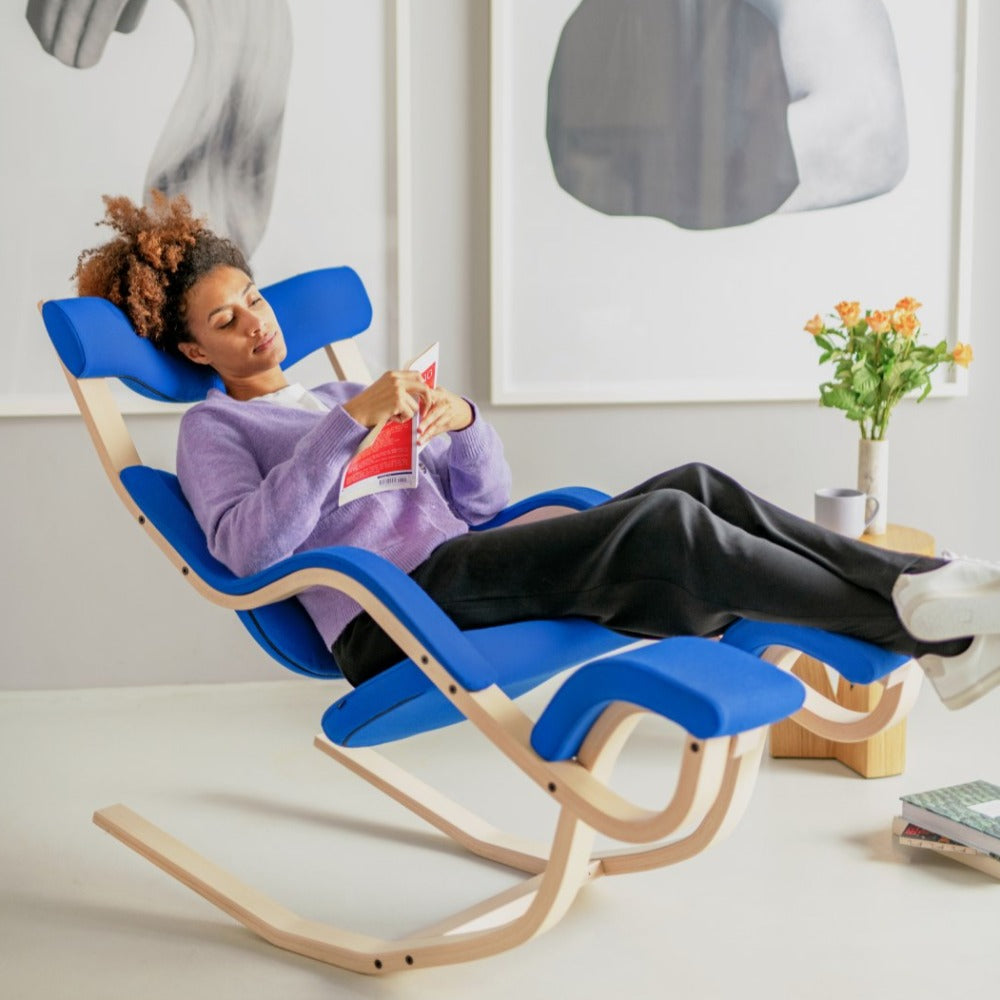When it comes to indoor plants, the options are endless.
So where do you start? Let's start with what you like. Are you inspired by small or large plants? Hanging or climbing plants? How about tropical varieties? In any case, light exposure and humidity levels should be considered as key factors to allow your new roommates to thrive.
We compiled a personal shortlist of a few varieties that inspire us because of their unique and dramatic shapes.
 Amazon elephant's ear - This is a common yet elegant ornamental houseplant originally from southern Asia. It has large, arrow-shaped leaves, ribbed with distinct silvery nerves. Its attractive foliage shows different shades of green especially when light shines on the leaves. It prefers rich, fast-draining potting soil that must be kept moist, requires regular feeding and abundant indirect sunlight.
Amazon elephant's ear - This is a common yet elegant ornamental houseplant originally from southern Asia. It has large, arrow-shaped leaves, ribbed with distinct silvery nerves. Its attractive foliage shows different shades of green especially when light shines on the leaves. It prefers rich, fast-draining potting soil that must be kept moist, requires regular feeding and abundant indirect sunlight.
 Areca Palm - This indoor house palm is a great way of infusing tropical flair to your décor. Moreover, it is known to act as a living humidifier and a natural indoor air purifier. This palm can grow to about 7-feet tall for a dramatic focal point in a room, but since it also does well in a root restricting container, it offers a natural way to limit its size. The Areca Palm will thrive if given the right amount of bright, indirect light, so placing it on a south or west-facing window is ideal.
Areca Palm - This indoor house palm is a great way of infusing tropical flair to your décor. Moreover, it is known to act as a living humidifier and a natural indoor air purifier. This palm can grow to about 7-feet tall for a dramatic focal point in a room, but since it also does well in a root restricting container, it offers a natural way to limit its size. The Areca Palm will thrive if given the right amount of bright, indirect light, so placing it on a south or west-facing window is ideal.
 Bird of paradise - Its well-deserved scientific name, Strelitzia reginae, suggests royalty, since it was named after Charlotte of Mecklenburg-Strelitz, Queen consort and wife of King George III. This is an imposing, elegant and vibrant plant of lush foliage that can reach around 6 feet, when given the right conditions of light and humidity.
Bird of paradise - Its well-deserved scientific name, Strelitzia reginae, suggests royalty, since it was named after Charlotte of Mecklenburg-Strelitz, Queen consort and wife of King George III. This is an imposing, elegant and vibrant plant of lush foliage that can reach around 6 feet, when given the right conditions of light and humidity.
 Dieffenbachia- This attractive indoor plant can provide a tropical-looking accent to your home decor or become a focal point. The variegated leaves can easily add a touch of light and freshness to spaces. It is native to the American tropics from Mexico and the West Indies to Argentina.
Dieffenbachia- This attractive indoor plant can provide a tropical-looking accent to your home decor or become a focal point. The variegated leaves can easily add a touch of light and freshness to spaces. It is native to the American tropics from Mexico and the West Indies to Argentina.
 Dragon tree - For a mid-modern look this tall plant from the dracaena family, can be an excellent addition to your decor. Not only can the Dragon tree be considered as one of the most effective plants for improving indoor air quality, but also it has the advantage of requiring minimum care as it is drought tolerant and likes filtered indoor light. It is native to the Canary Islands and the western African coast.
Dragon tree - For a mid-modern look this tall plant from the dracaena family, can be an excellent addition to your decor. Not only can the Dragon tree be considered as one of the most effective plants for improving indoor air quality, but also it has the advantage of requiring minimum care as it is drought tolerant and likes filtered indoor light. It is native to the Canary Islands and the western African coast.
 Fiddle leaf fig tree - The large, glossy, dark green leaves of this indoor tree, reminiscent of a fiddle violin, will add instant character to a decor. This plant, native to western Africa, likes a soil that will dry out slightly in between waterings, as well as bright to medium indirect light.
Fiddle leaf fig tree - The large, glossy, dark green leaves of this indoor tree, reminiscent of a fiddle violin, will add instant character to a decor. This plant, native to western Africa, likes a soil that will dry out slightly in between waterings, as well as bright to medium indirect light.
 Kentia Palm - This graceful palm, native to Australia and New Zealand, is a real accent plant winner. It is easy to care for, as it tolerates low light and colder indoor temperatures. This Kentia Palm is slow growing but can reach up to 10 feet under ideal conditions.
Kentia Palm - This graceful palm, native to Australia and New Zealand, is a real accent plant winner. It is easy to care for, as it tolerates low light and colder indoor temperatures. This Kentia Palm is slow growing but can reach up to 10 feet under ideal conditions.
 Peace Lily: If you happen to have rooms with limited lighting and few windows, you may consider this gracious plant with delicate white flowers that contrasts beautifully with its elongated deep green leaves. This plant, which thrives in the shade of the rain forests of South America, prefers low humidity and low light conditions
Peace Lily: If you happen to have rooms with limited lighting and few windows, you may consider this gracious plant with delicate white flowers that contrasts beautifully with its elongated deep green leaves. This plant, which thrives in the shade of the rain forests of South America, prefers low humidity and low light conditions
 Philodendron -There are about 400 species of philodendrons in the world and they all offer a high impact accent to your space. Philodendrons are one of the most forgiving and low maintenance plants that you can bring into your home. They have large, glossy, strongly lobed or deeply cut patterned leaves that will enhance your space and provide a beautiful focal point. The plant is native to tropical forests of southern Mexico, south to Panama.
Philodendron -There are about 400 species of philodendrons in the world and they all offer a high impact accent to your space. Philodendrons are one of the most forgiving and low maintenance plants that you can bring into your home. They have large, glossy, strongly lobed or deeply cut patterned leaves that will enhance your space and provide a beautiful focal point. The plant is native to tropical forests of southern Mexico, south to Panama.
 Pothos - An undemanding vine with colorful and vibrant leaves. It is an easy way to add a green accent to your home or office. Pothos can tolerate a wide variety of light conditions but they do not do well in direct sunlight. For the highly variegated species, brighter light conditions are required as they may lose their variegation if light is too low. This plant is native to China, the Indian Subcontinent and Southeast Asia.
Pothos - An undemanding vine with colorful and vibrant leaves. It is an easy way to add a green accent to your home or office. Pothos can tolerate a wide variety of light conditions but they do not do well in direct sunlight. For the highly variegated species, brighter light conditions are required as they may lose their variegation if light is too low. This plant is native to China, the Indian Subcontinent and Southeast Asia.
 Rubber Plant: tThis plant is known formally as ficus elastica since her milky sap is a source of natural rubber. It can be trained to remain small to medium size by restraining the size of its pot or let to reach the height of an imposing indoor tree. In any case, it will charm you with the luster of its deep green leaves. This plant, abundant in nature in the warm climates of Central and South America, requires bright filtered light, well-draining, and well-aerated soil when grown as a houseplant.
Rubber Plant: tThis plant is known formally as ficus elastica since her milky sap is a source of natural rubber. It can be trained to remain small to medium size by restraining the size of its pot or let to reach the height of an imposing indoor tree. In any case, it will charm you with the luster of its deep green leaves. This plant, abundant in nature in the warm climates of Central and South America, requires bright filtered light, well-draining, and well-aerated soil when grown as a houseplant.
 Sneak plant - It does not get much easier than this indoor houseplant — also known as mother-in-law's tongue or sansevieria. It has variegated leaves that grow upright, with yellow or white edges in some varieties. In addition to being very forgiving and tolerating of a variety of lighting conditions, the sneak plant has the added benefit of improving your space’s air quality. This plant is happiest in a porous pot with a potting mix that allows good drainage as if water is trapped inside the pot, roots can easily rot. This plant is native to tropical West Africa.
Sneak plant - It does not get much easier than this indoor houseplant — also known as mother-in-law's tongue or sansevieria. It has variegated leaves that grow upright, with yellow or white edges in some varieties. In addition to being very forgiving and tolerating of a variety of lighting conditions, the sneak plant has the added benefit of improving your space’s air quality. This plant is happiest in a porous pot with a potting mix that allows good drainage as if water is trapped inside the pot, roots can easily rot. This plant is native to tropical West Africa.
 ZZ Plant- formally known by botanists as Zamioculcas zamifolia, and informally as Zanzibar Gem, Welcome Plant or Eternity Plant, is a naturally shiny addition of greenery to your office space. It tolerates low maintenance, low light, dry air and infrequent watering. The plant is native to East Africa, from Kenya to South Africa.
ZZ Plant- formally known by botanists as Zamioculcas zamifolia, and informally as Zanzibar Gem, Welcome Plant or Eternity Plant, is a naturally shiny addition of greenery to your office space. It tolerates low maintenance, low light, dry air and infrequent watering. The plant is native to East Africa, from Kenya to South Africa.



